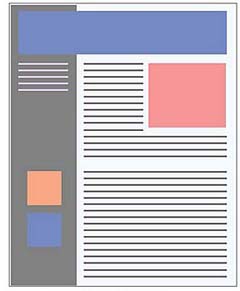We had a great turnout at Friday’s D-WRD session, “How Do You Read a Portfolio & Read Multimodally?: Teachers as an Interpretive Community.” (Dunham & Moore)
We began by trying to close read a couple student digital writing portfolios, focusing on the reader’s experience — what Louise Rosenblatt calls our reading patterns of “selective attention” — which are informed by ideology, emotion, training, assumptions, institutional imperatives, and other environmental contexts. Rosenblatt’s contribution is to help us think about the extent to which we might create meaning in the act — the “transaction” — of reading.
We talked about diction, tone, and arrangement, for example, and how those features affect our expectations and our reading experience; we also discussed student digital writing portfolios’ opening “Welcome” pages as units of discourse and how they shape our expectations.
An example of that is the hybrid nature of a visually rich and highly personal representation on a Welcome page that transitions into a more conventional textual experience, which can provide, depending on a reader’s sympathies, insights into both emerging identities — student, writer, feminist, sophisticated cosmopolitan, alternative DIY enthusiast — and composing practices in digital spaces.
Many academic and professional audiences have expectations for text and images that are coherently integrated with obvious organizing principles.  These principles help achieve professional outcomes:
These principles help achieve professional outcomes:
- To make a good impression and establish credibility with readers
- To help readers understand the structure and hierarchy of your writing
- To help the readers find the information they need
- To help readers understand the information
- To help readers remember the information
But when students compose by coordinating and orchestrating with multiple meaning-making modes — alphabetic text, graphic images, animation, color, gesture, sound, performance — we need to draw on different kinds of reading practices. Reading images, reading visuals, reading multimodally: even if we went to college in the 20th century, and even if the dominant genre was the academic essay based on alphabetic text in print, we can — and should — draw on semiotic, rhetorical, and digital-reading practices that help us to interpret students’ multimodal compositions.
- Wysocki: generous reading
- Genre conventions
- Print/screen mediating environments
- Understanding our own reading & literacy practices
- Intentional fallacy
- How amenable are readers to experiencing social literacies amid academic literacies?
- Reading as meaning-making: text, context, reader response
We discussed places in portfolios where students reflect on their experiences in a writing course and how they often position themselves as students embodying an institutionally defined student role: “I created a draft, I got feedback from the teacher, I revised, and I really benefitted from that process” (roughly paraphrased). We noted the distinction and the implications of those identifications when — according to Julie Jung — “pressures to identify as students can override any value they might find in identifying as writers.” (From her College English article, “Reflective Writing’s Synecdochic Imperative: Process Descriptions Redescribed.”)
All of these contexts and concerns led to a discussion of assessing and grading portfolios. We talked about a few strategies for that — structured content; learning outcomes; holistic grading — and, if you don’t mind a quick D-WRD plug, this is exactly the kind of collective teacher talk to which we aspire.
Possible future strategies: group portfolio readings; ongoing reflections on the role of the reader in portfolio assessment (Yancey; Herrnstein Smith; Wysocki) and shared rubrics.
Highly recommended reading –– we looked at some generative passages in the session: “Shultz, et al. “Stories of Reading: Inside and Outside the Texts of Portfolios.” Assessing Writing. 4(1997): 121-32. (Email me for a PDF.)
We’re going to follow up in the SQ with a Student Portfolio Roundtable, when 3-4 recent FYW students will join us for bagels and a discussion of their experiences planning, composing, and presenting their digital writing portfolios. [Update: Successful & generative Roundtable, SQ 2015]
